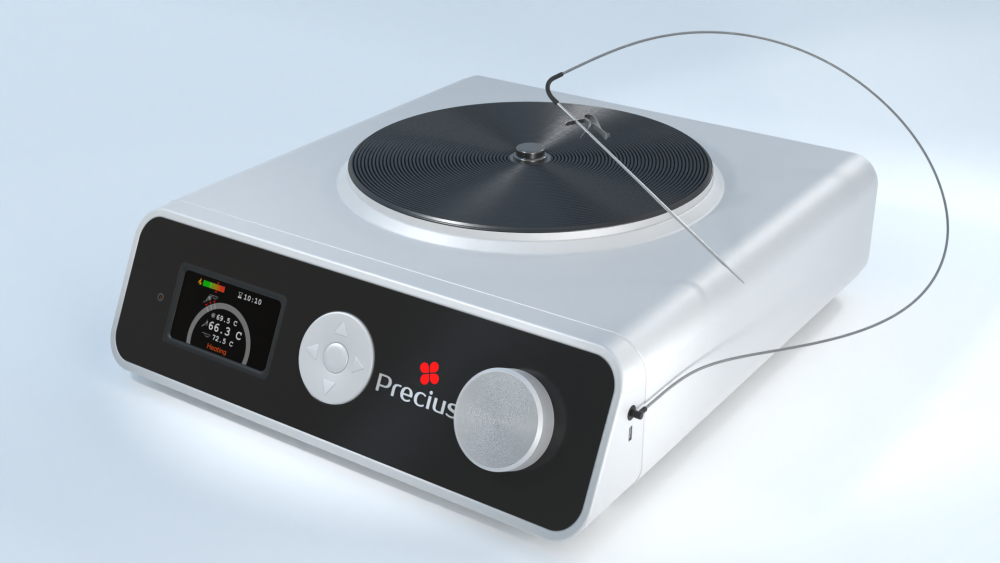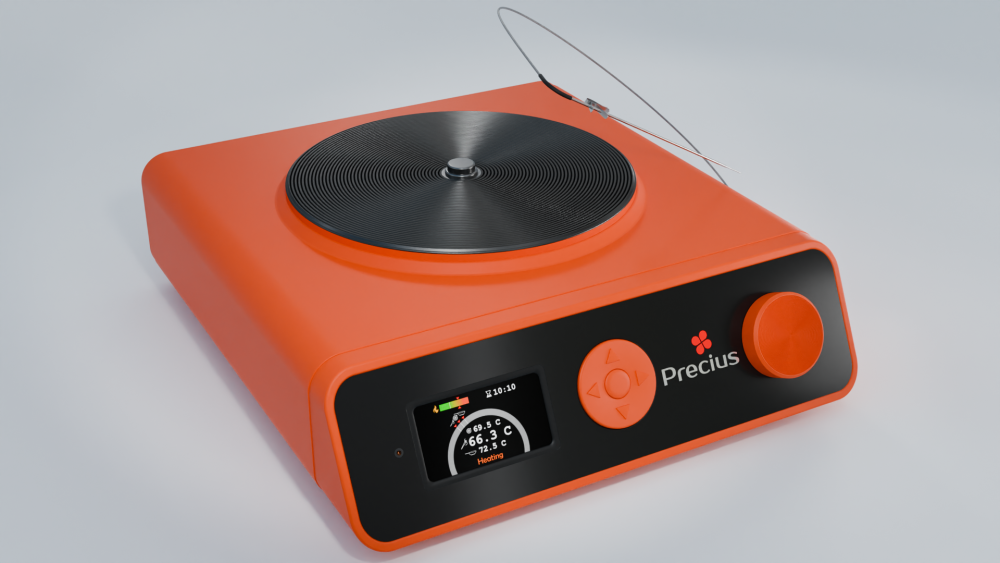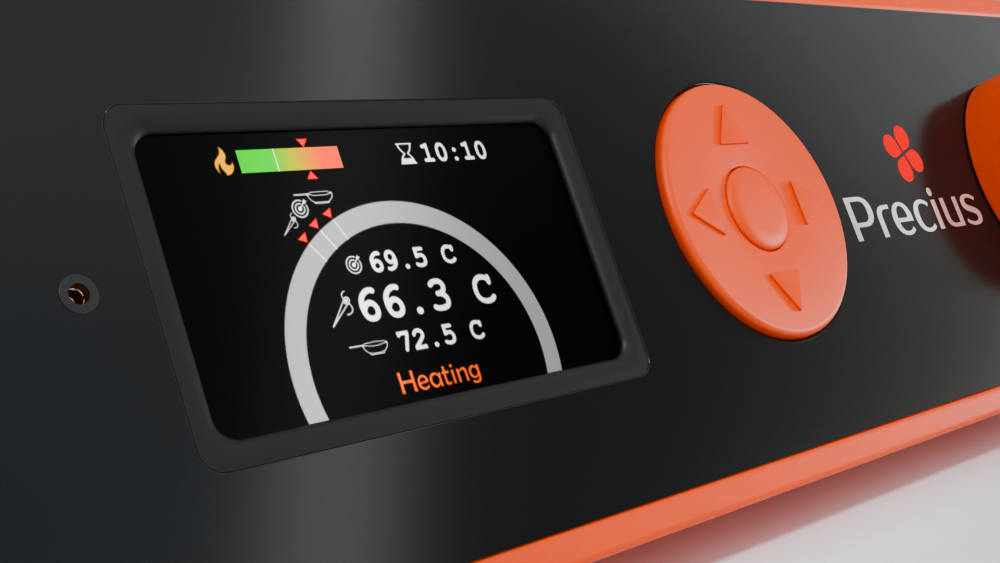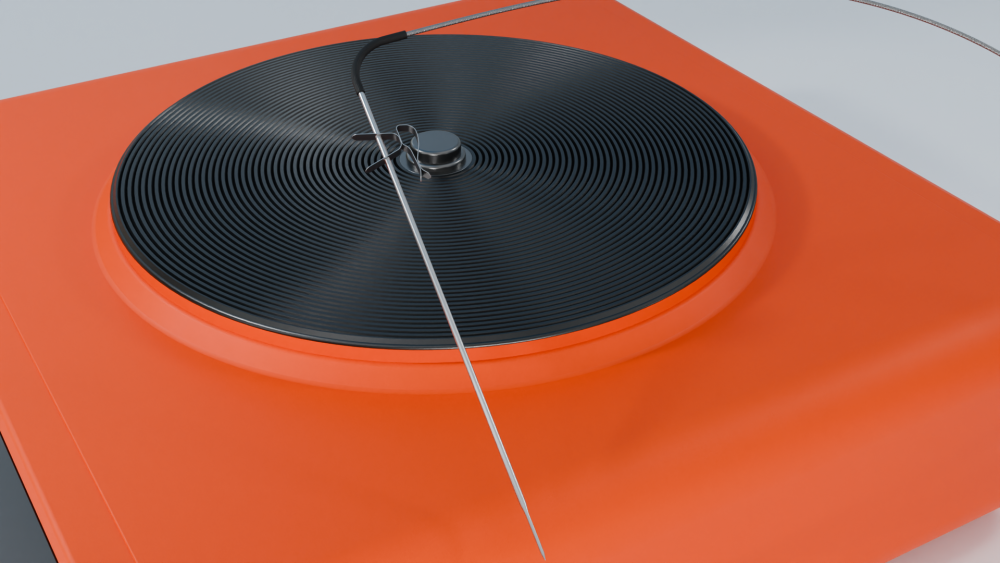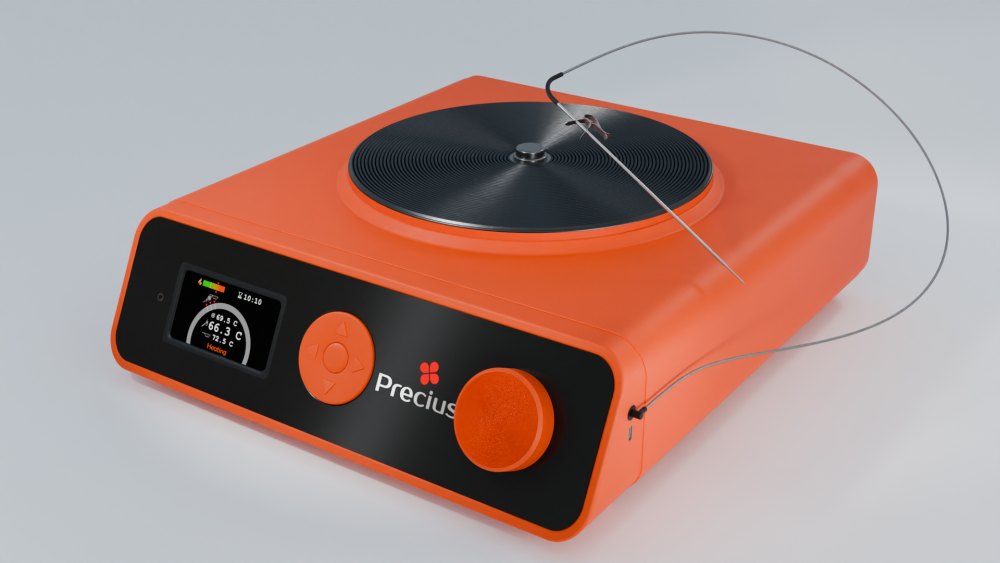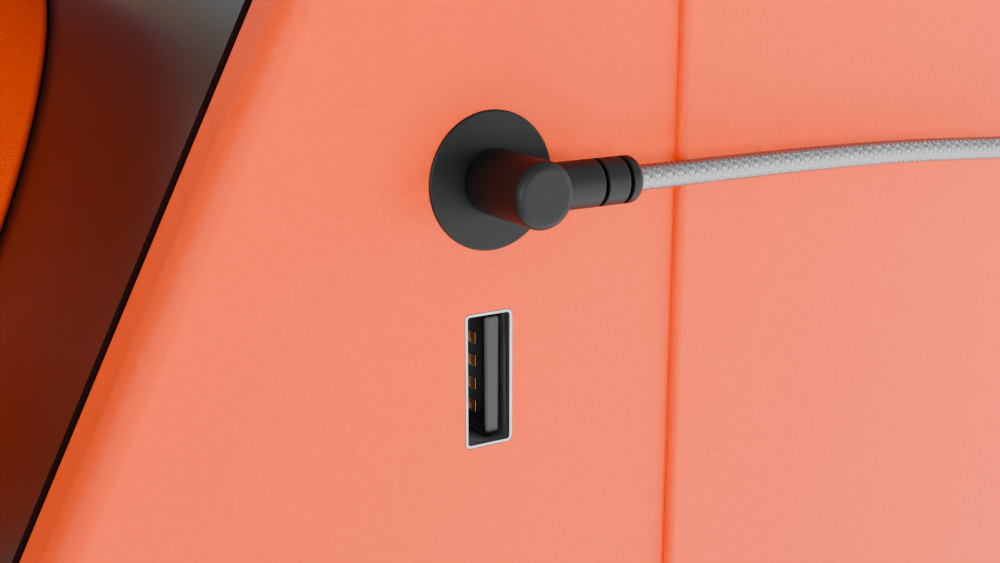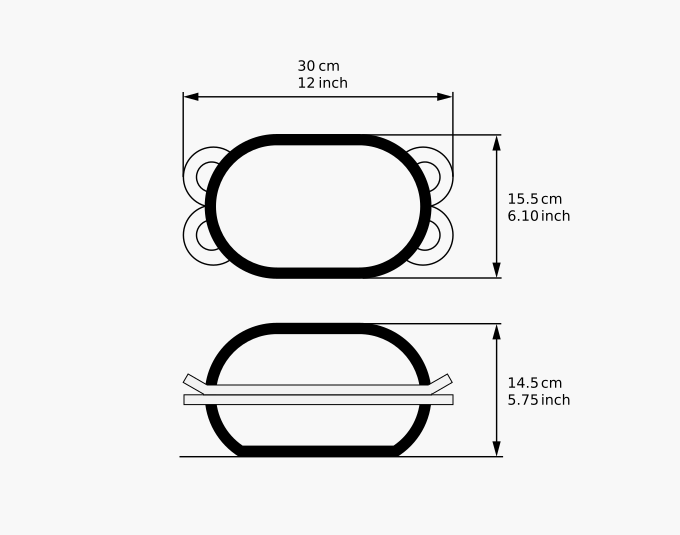-
Posts
38 -
Joined
-
Last visited
Contact Methods
-
Website URL
https://wekigai.eu
Profile Information
-
Location
Eindhoven, The Netherlands
Recent Profile Visitors
The recent visitors block is disabled and is not being shown to other users.
-
I remember you too! You quote is permanently enshrined on the Kickstarter, thank you once again! Also, thanks for all the positive words about our next project. I think it is worthwhile for me to clarify here that this product is not an Induction based one. It is based on resistive heating (similar to old electric stoves, but a lot more responsive). This was one of the hardest decisions (so far!) for us to take on this product. Induction has its advantages. It is responsive, it is efficient, the cooktop remains cool and easier to clean. But, our decision to go with non-induction based technology was because: Induction is notorious for being not-uniform in heating. The best multi-layer pans still have a 10-50 F variation [Source. In this case, using a Control Freak, arguably a high performance induction cooktop in every aspect]. Something like cast iron can have 80 F non-uniformity. In our view, for a precision cooker, all the accuracy of 1 F is kind of pointless if the uniformity is 10 to 50 times worse. The figurative lipstick on the pig. So we took an approach more favoring the uniformity. Induction restricts your pan choices. While for most purposes this is not a big issues, we think for precision cooking the compatibility with better spreading materials like copper of aluminum pans is of added value. Apart from material, induction also does not work for very small pans because the detectors do not detect it. Induction is noisy. The coils through which the induction currents run, need to be actively cooled. This often mandates a fan of reasonable size. Not much of an issue during regular cooking, but if you want to use your precision cooking for a 72 hour fermentation cycle or for a fondue on the dining table, this gets very annoying. Induction makes the electronic design a lot more complex. The power electronics get more complex which increases the cost of the whole thing. We do not think it would be feasible to do justice at this price point for an electronic design that would be sufficiently robust, reliable and durable. Paragon, Hestan Cue, Tasty one top, Oliso are all the products that tried to make precision cooking induction around this price point but failed to sustain it commercially. Of course, I do not know the reason, but I can hypothesize that the market size is too low to give economies of scale for such devices at this price point. The available ones with similar function like Contro Freak, Ztove or Impulse cooktop all retail for 1500-6000 $. We believe that staying away from Induction will give this product its best chance of materializing and staying commercially sustainably. Oh, there is one more non-technical reason we are not doing Induction. The patent landscape here is really a landmine and as a tiny two-person company, we do not want to rub the big guys wrong way. We are probably a rounding error for a large company, but we will never know. In the future, may be as you say, we will just create a simple induction cooktop with mechanical controls because how much we hate touch controls.
-
Thanks for taking the time. I am happy that color is the biggest detractor and surely something we can easily change. About the size of the heater, a larger heater as you would say require 'zones' to make it fit all sizes of pans. This is of course possible, but would add to the complexity and hence cost. Also, a larger one will have a much lower power density because of the large area with limited (1500 W) power. I think we will most likely stick with the 8 inch size for the first version and there is always room for the improvement in the future versions.
-
Thanks for the kind words. In a way, we make products mainly for ourselves (for using at home). That is how we made LoafNest (eG-friendly Amazon.com link)and we think that is why it got the acceptance it did. After all, if we do not want to use a certain product, why would someone do and pay money for the privilege? It is a lot easier to sell buzzwords, bells and whistles and most large companies do that. We are tiny (literally a wife-husband couple running the whole show). We have no external shareholders, ambition to make millions or even a specific quarterly result. So we are trying to fill that niche gap for a functional product that is not overly marketed or locked in for commercial interests. We can only hope this is also recognized by the market and that this product will be a modest sustainable success.
-
Our device will have 1500 W power, mainly restricted by the wall outlet in US. May be we will make a 2000W EU/UK version if there is demand. So in that sense, we make this more suitable for cooking. The precision would be around 0.5 C / 1 F which is sufficient for most cooking uses. So in that sense our device is more directed towards cooking whereas the one you have more towards lab use. We are thinking of a few stirring mechanisms, but most likely it would be something like 'Stirmate (eG-friendly Amazon.com link)' (may be we will collaborate with them if they are open to it). We have a 9V power outlet which should be able to plug in a stirrer, or a sous-vide water circulator or a fan or something else. P.S. Signup on the mailing list if this is interesting for you. We would most likely end up crowd funding it and you may be interested.
-
Yes, we are really trying to price this aggressively because we do want to make precision cooking accessible to more people. We do not have investors or shareholders to make happy, we would be happy just not lose (much) money! Color is easy to change. May be we will make multiple versions if there is sufficient interest. For now we chose the symbolic color for the Netherlands (where we are based). We also though since it is a different kind of appliance, it should look a bit different too. Yes, the device will have WiFi in case we want to add some fancy features in the future (e.g. rice ready when you get back home). But for all basic interactive cooking, you would be able to use the just the buttons and knobs. Magnetic stirrer would not be feasible, but we plan to include an automatically stirring spatula. We are working on some ideas and will share when they are mature enough. Thank you for your encouragement. May be we will make a stainless steel version just for people like you who prefer that.
-
About 7 years ago, we posted here about LoafNest (eG-friendly Amazon.com link). The encouragement, suggestions and discussions were received here were surely a large factor in its modest success. As a tiny two-person company, we feel grateful to have gotten that support. Now we are back with our next idea and we hope you would find it interesting too. We are building an open source precision cooker. You can maintain very precise temperatures using the direct pan temperature sensor, or the probe sensor (for liquids, sauces) or both in combination. See this link if you are technically inclined. Or this consumer friendly page for more details. We are proud about these aspects: Affordable: Estimated retail price below $150 with a target of $100. About 10-15 times cheaper than similar products in market. We aim to make precision cooking affordable to everyone. Open source : which means no lock-ins or dead devices. If you bought it, it is yours for ever. See the Github page. Real controls : Real buttons and knobs for all basic functions. No touchscreen or need to use apps for basic function (Who thought touchscreens were a good idea with greasy/wet hands in the kitchen?) Unrestricted : no paid apps, subscriptions or other restrictions. If you are a programmer, you can modify the program using the opensource code. Extendable, repairable: option to extend with stirring, circulating attachments or a cabinet for use as a bread proofer, fermentor or dehydrator [these attachments are in our roadmap]. We would really love to hear what you think about this. Any criticism, comment, suggestion or support will be highly appreciated. After all, as an open source product, we are all building it together.
-
trfl changed their profile photo
-
Sorry, no offence was mean to clay bakers! If you are happy with it, nobody should be able to tell you otherwise. For us, what we care is that more people eat healthier and tastier bread at home whether they use LoafNest or not. More people baking at home is a win for everyone. "Industrial area" that would be an adjective that describes most of the Eindhoven thanks to the legacy of being birthplace of Philips. The city is kind of proud of it and many modern buildings are also in the similar architecture. Surely it is not everybody's cup of tea. The food scene here is alright for a city of its size although more or less stagnant. We do have a few 1, 2 Michelin stars in the city and within cycling distance [yes, Netherlands 😀].
-
@blue_dolphin Thank you for taking time to share your experience with LoafNest. We are happy to learn that it worked for you 'as advertized!'. Indeed you can try recipes with more gluten development. If you prefer to do a second raise, it may be worthwhile to get a oblong benneton of around 25cm x 15 cm (10 inch x 6 inch) inner dimension. That would work very well with LoafNest. The price is indeed higher than Kickstarter now thanks to LoafNest being a real product now and to other costs of sales. As a very small company (essentially one-person), we are also yet to achieve economies of scale. But, we are getting there slowly, thanks to word of mouth from supporters like yourself. But if anyone is reading this, just PM us and let us see if we can give you a discount or give insider info about upcoming promotions. 😉 @AlaMoi Indeed, as mentioned by @Duvel, @JoNorvelleWalker clay has overall lower heat capacity. This is mainly due to high density of cast iron compared to clay (which incidentally also makes cast iron heavier for same size). The other disadvantage with clay is that it is a worse conductor than cast iron. So, cast iron is also faster to release stored heat into the dough because it can transport heat (relatievly) faster within itself. So, all things being equal, we expect cast iron would give better result than clay baker. LoafNest's other advantages are the non-stick liner with makes it extremely easy to handle the dough/loaf and allows for a no-shaping method.
-
Spelt is a great grain to work with but it is surely not gluten free. Oftentimes it is used by people who are allergic to wheat proteins (but not allergic/intolerant to gluten). May be hence the wrong association of spelt with gluten free baking. As others mentioned in this thread, it has a nice rich flavor which is a good reason to use it even if you are not allergic to wheat. In general for bread, you can use any whole wheat recipe and replace whole wheat flour 1:1 with spelt flour. We make a nice no-knead, no-shape spelt loaf with LoafNest once in a while. You can see and example on the recipe book (page 24) with 80% hydration.
-
Thank you blue_dolphin, you settled the debate It was a pleasure to see LoafNest in a kitchen half way across the world! We are happy! Hope you had a chance to use LoafNest in another oven where it could fit.
-
LoafNest is only ~6 inch tall so I presume it would fit in the CSO. But it may be a good idea to check with a tape measure the size inside your oven after assembling the lowest rack. Another option is just to use a cast iron casserole (dutch oven) that you know fits in your oven and see if you can make loaves based on LoafNest recipe book. We call it LoafNest recipe book but it is not compulsory to own LoafNest to own the free eBook. LoafNest only makes it easier and better. If you try it without LoafNest, it may be a good idea to scale down hydration of recipes by 10-20% because without LoafNest the loafs may struggle to keep their shape in a large round casserole.





